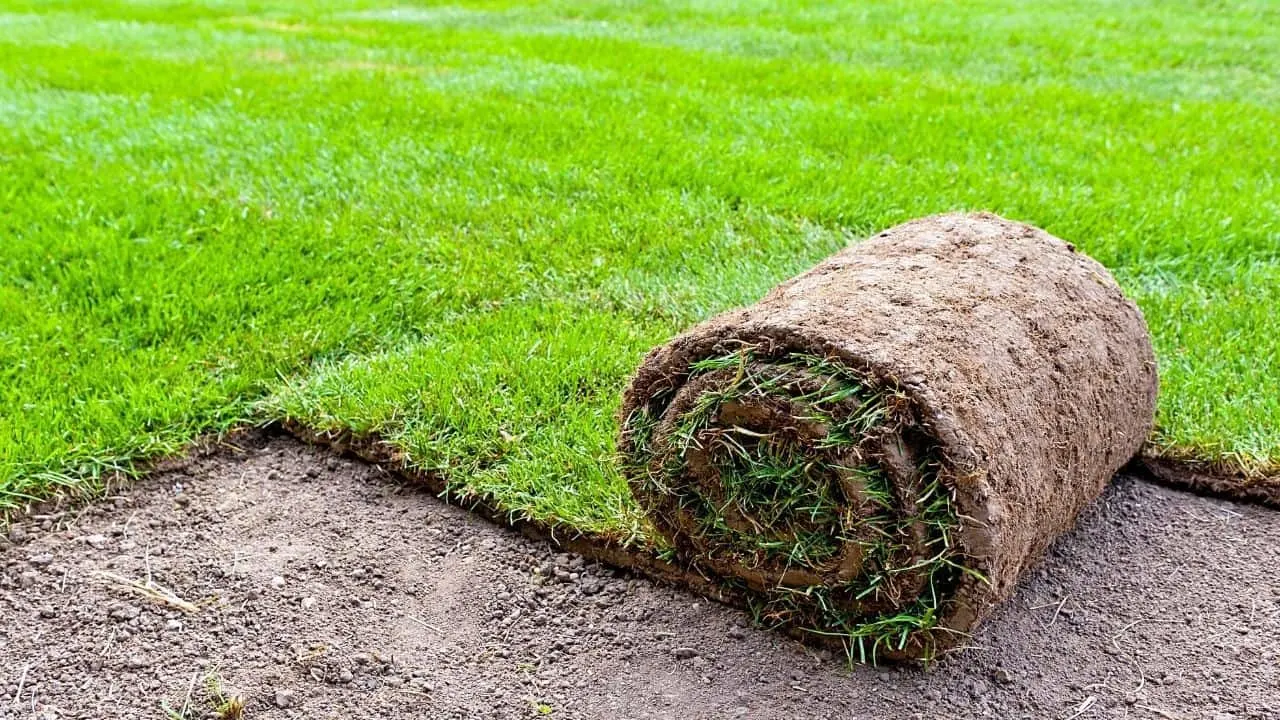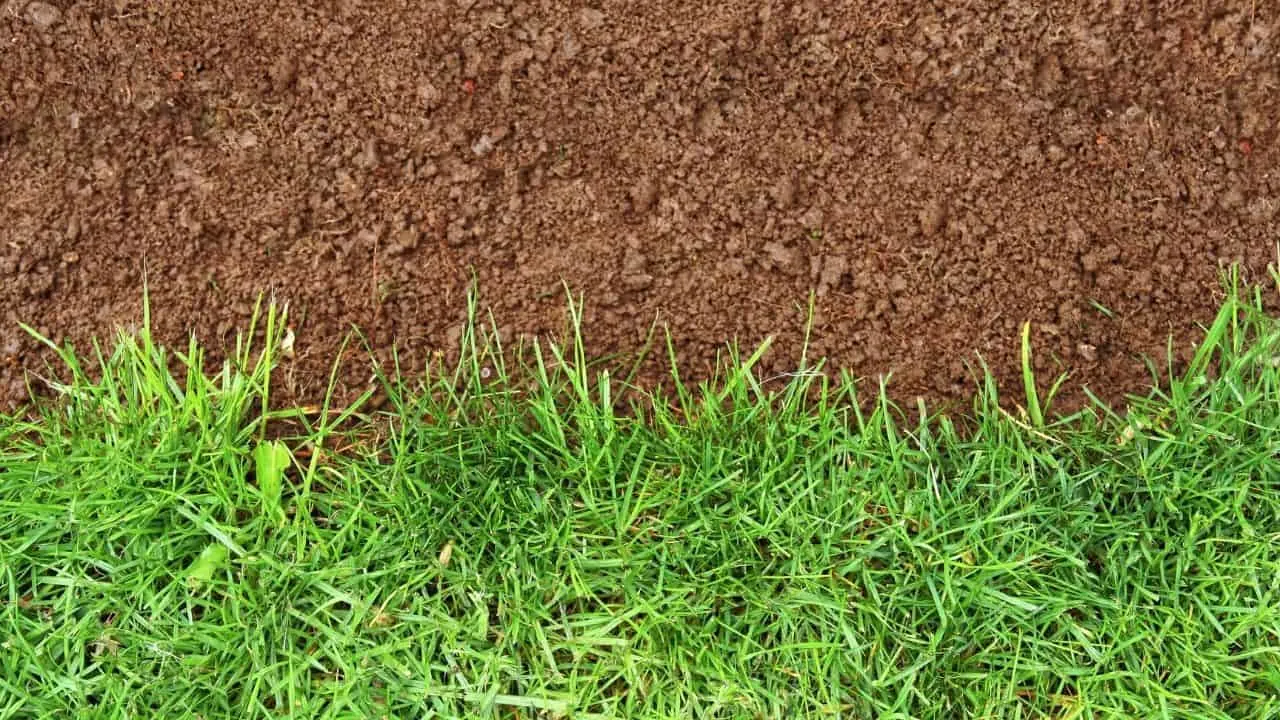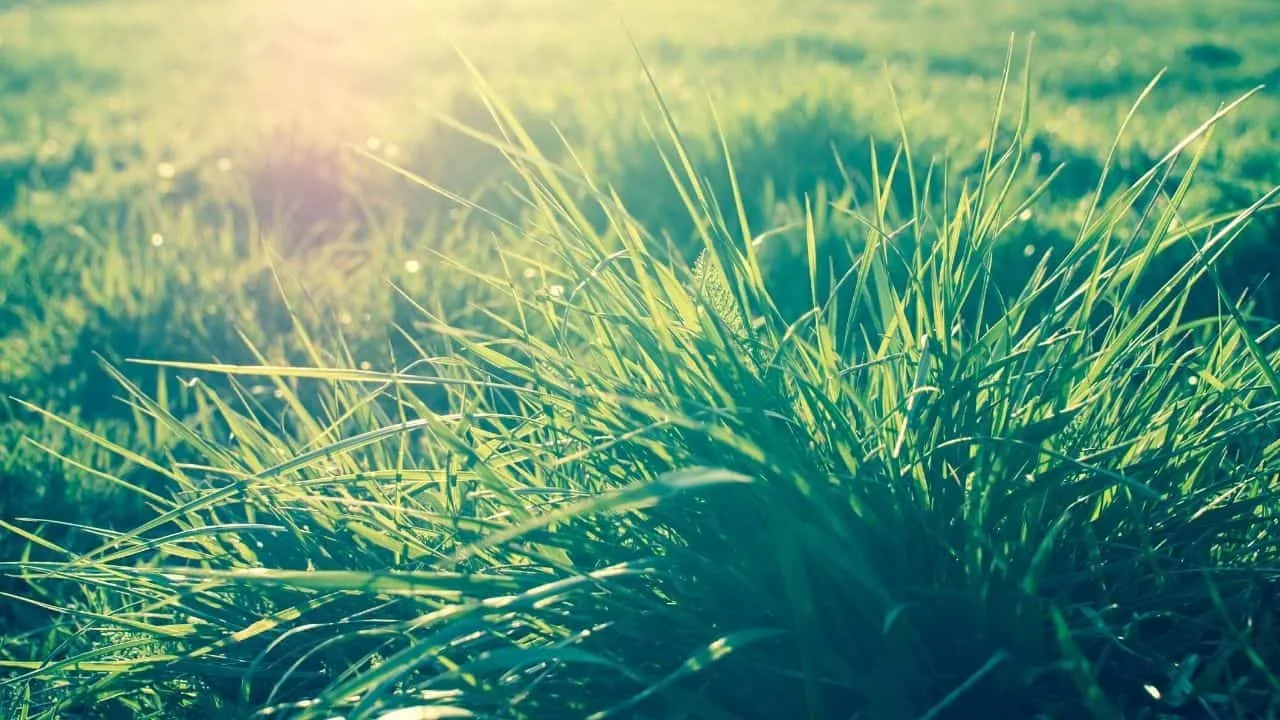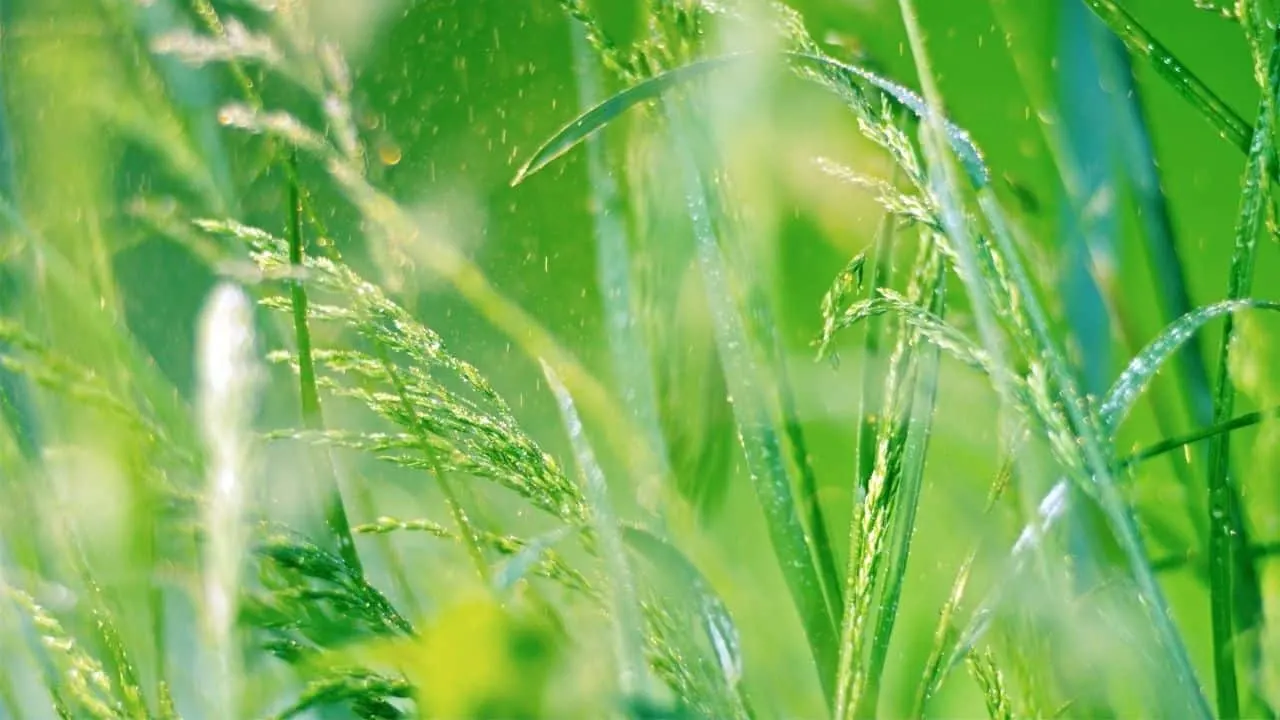After planting grass seeds, keep the soil moist until the blades are well established. An inch of rainfall per week is best and if the weather is dry, hand watering or irrigation is necessary.
A number of factors will determine the exact amounts of water that are needed for a new or established lawn. Sandy soil will require more water than heavier, clay soils.
A hot, dry cityscape will need watering more often than a fertile, country lawn.
Exact amounts and times to water depend on many environmental conditions, including the variety of grass, soil type, evaporation rate, surrounding plants, nearby buildings, amount of sunshine, rainfall amounts, location, and climate.
Table of Contents
How Long do you Water after Planting Grass?
If it doesn’t rain, I always water new plantings until the seeds have sprouted and reach a height of about 4 inches. Of course, if it rains every day, I don’t have to water. Mother Nature does it for me.
Water for Approximately 12 weeks After Planting Grass
Keep an eye on new lawns for up to three months after sowing the seed. Don’t allow the soil to thoroughly dry out during this critical time.

Until the grass is established, it must have plenty of moisture to develop a good root system that can sustain the blades through dry weather. If grass doesn’t get enough water, it will turn brown.
If dry conditions continue too long, the grass will die.
Don’t let seedbeds or new grass plots get soggy either. If the grass is standing in water, then the soil is probably waterlogged.
Roots can’t live without oxygen in the soil, so be careful when watering low areas unless it is very sandy. Strive for a happy medium, not too dry, not too wet, but just right.
Different Types of Grasses Require Varying Amounts of Water
According to studies done on grass and watering requirements, American buffalo grass requires the least amount of watering and can get by on less than other varieties.
Zoysia grass, centipede grass, and bermuda grass are also drought tolerant and need less water than others. Red fescue, hard fescue, chewing fescue, and St. Augustine grass require moderate amounts of water, around an inch per week.
Perennial ryegrass has high demand, while Kentucky bluegrass and tall fescue need the most water of all. Plan on watering bluegrass and tall fescue at least an inch per week or more.
Soil is Important When Deciding How Long and How Much to Water After Planting Grass

Sandy soils will require watering a lot more often because water filters down through the soil and away from the grassroots quickly. This leaves the plants high and dry.
A rich loamy soil probably can get by on one inch of water a week. Heavy clay soils hold lots of water and may only require watering occasionally.
How Long to Water the Grass After Planting also Depends on Evaporation Rate

Grass will need watering longer and more often if it is located in a place that gets full sun. Grass planted in the shade or part-shade will need far less.
Cloudy days conserve water, while sunny days suck water out of leaves and the soil. Watch the weather to determine watering times.
Go ahead and get your hands dirty! If the soil’s damp, then the grass doesn’t need water yet.
If it is powdery dry, watering should be done immediately.
Wind, which causes a higher evaporation rate, should also be considered. Windy sites will require more water for longer periods than grass that is planted in a protected area.
Grass Plantings in the City and More Rural Areas
Planting grass in the city can be a trial. Hot pavement, runoff from storm drains, shade from tall buildings, and car exhaust fumes can all affect how long grass will need to be watered.
It’s easier to grow everything when you’re in the countryside. Of course, there may still be overhanging trees and water runoff, but the soil is usually better.
Rich soil with lots of hummus is always best for grass and requires less water.
Rainfall Averages are Good Guides to Follow

If the grass is planted in a desert area, it will need more attention and watering times than grass planted in a moderate climate.
If rainfall averages are around an inch per week and humidity is relatively high, then grass might never need to be watered as long as predictions remain accurate.
Temperatures are Also a Factor
When it is 100 degrees Fahrenheit outside (38 degrees Celsius), grass will need more water than when it is a mild seventy degrees Fahrenheit (21 degrees Celsius).
Grass will need less watering during winter than in summer.
Frequently Asked Questions about How Long to Water After Planting Grass
Can nearby vegetation make a difference in how long I water my grass after planting?
Large trees might shade the area but they might also take up lots of the available water. It is best to feel the soil once a week and see if it is dry, moist, or wet. Then water as needed.
What if my new lawn has weeds?
Weeds will suck the nutrients and water out of the soil, causing the grass to suffer. Dig out all the broadleaf plants like dandelions and plantains. The fewer weeds, the less watering the grass will need.
What happens if I forget to sprinkle my grass with water?
As long as it is not at the critical sprouting stage, it will probably be OK if the lawn doesn’t get watered for a few days. Try watering once weekly or as needed for the best-looking lawn.
What type of grass is the least picky when it comes to watering?
Usually, cold climate turf grasses with underground stems (rhizomes) need less watering than other types of grasses. Rhizome grasses can survive in dry conditions for weeks with limited damage.
Watering Grass is Not an Exact Science
How long to water after planting grass can be a complicated question, but the answer is fairly simple. Keep it moist for about three months or until it is well established.
Always plant a type of grass suitable to the location and climate. Know your soil.
Be prepared to water your grass if you’re experiencing rainfall that’s lesser than an inch. Check new grass plantings every few days and soon you will have a beautiful green lawn.

Daniel has been a plant enthusiast for over 20 years. He owns hundreds of houseplants and prepares for the chili growing seasons yearly with great anticipation. His favorite plants are plant species in the Araceae family, such as Monstera, Philodendron, and Anthurium. He also loves gardening and is growing hot peppers, tomatoes, and many more vegetables.


